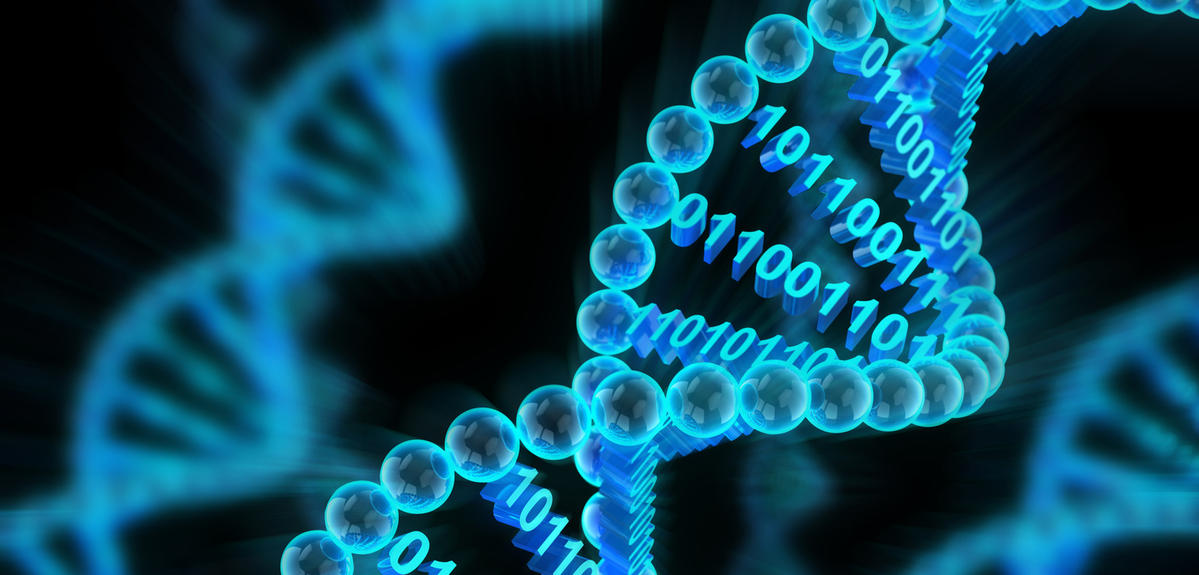You are here
Using Molecules to Store Information

What if all human knowledge currently on the Internet could fit into an office, instead of the hectares of data centers that mushroom across the planet? Chemists specialized in polymers are seriously considering the hypothesis. They are hoping to use these long molecular chains for long-term storage of the zettabytes (1021) of digital information produced each year. "A polymer is a sequence of small molecules that are combined with one another", explains Jean-François Lutz, a macromolecules specialist at the CNRS's Institut Charles-Sadron. "The idea is to write the information on the long chains by giving each monomer a value, 0 or 1, exactly as we do today on silicon-based substrates." The process is directly inspired from what nature has done for millions of years with its most famous polymer: DNA. "In DNA, the four nucleotides A, T, G and C code for billions of different pieces of genetic information, depending on the order in which they are combined", says Lutz.
A book stored on DNA
One of the avenues explored by the researchers actually consists in writing the information directly on artificial DNA, by using DNA synthesis techniques that were first developed in laboratories forty years ago. In order to write all the desired messages, it is "enough" to arbitrarily decide that two of the four nucleotides code for zero, and the other two code for 1. Reading the data is child's play: the researchers use automated genome sequencing machines. And it works! With this method, a team of researchers at Harvard has successfully encoded a 300-page book, including illustrations, on DNA.1 The advantage of DNA is that it is almost indestructible under suitable storage conditions. It remains intact for thousands of years, while silicon-based devices have a lifetime of a few decades at the most. The drawback is that it must be stored in aqueous solutions and is ionically charged, which is obviously not ideal when working at the interface of nanoelectronics!
This compatibility problem might however be resolved by coding information on synthetic polymers—good old plastic and other resins! This is what Lutz and his team are set to achieve. "The principle is to combine two artificial monomers, which we define arbitrarily as 0 and 1," he explains. This is easier said than done: although we have known how to synthesize all sorts of polymers commonly used in industry for sixty years, the monomer blocks combine randomly within the long molecular chains. This is a real problem for writing information!
"To control the order in which they assemble, we have been developing, for about 8-10 years, a series of methods that enable us to attach monomer blocks one by one," says Lutz.2 The process remains tedious—it takes a few minutes to attach a block to the molecular chain, which compares poorly with the rate at which our body synthesizes its DNA: 20 monomers/second. However, the researchers have already made wonders.
Thermosensitive polymers
"Using this method, we can already write a few words and we ought to be able to code an entire sentence in a few months' time," Lutz enthuses. The scientist hopes to store an entire book on these synthetic polymers within the next three or four years. And this is not about simple archival, but rewritable substrates, just like hard drives and USB keys. "We have developed temperature-sensitive polymers that break down at 50-60°C," he explains. "The principle is the same as on silicon: to erase, we destroy the data written at the desired position and we rewrite elsewhere, on a blank space."
For the time being, the researchers are hard at work with highly reactive chemistry intended to attach each block—and write the data—more rapidly. They estimate it will take about ten years to develop a reliable system, and another decade before these storage molecules are integrated into our servers and computers.














